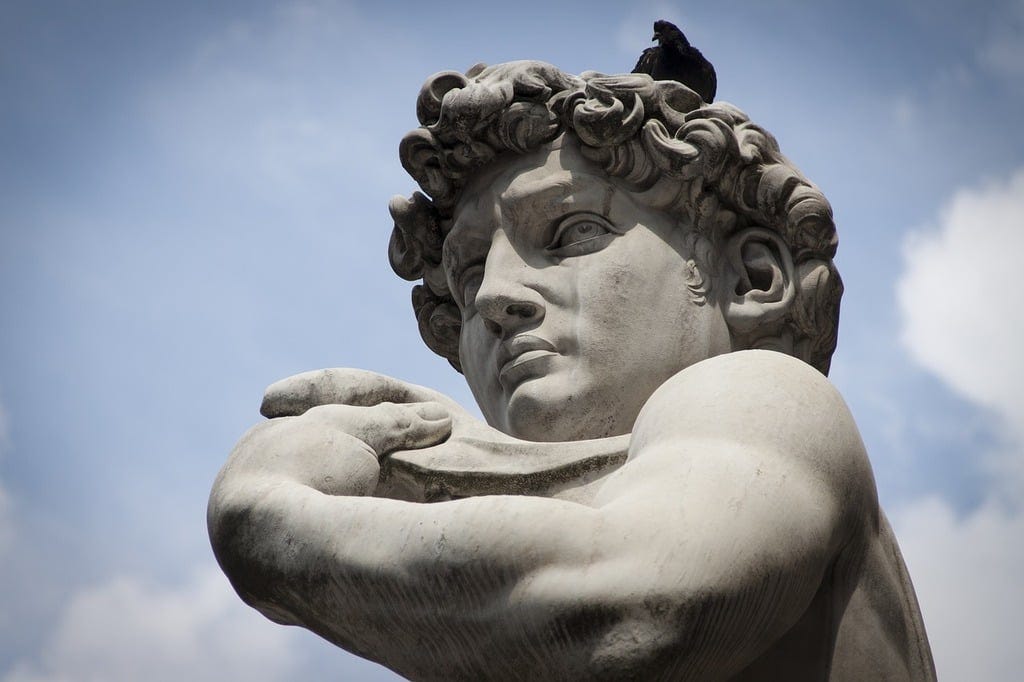Someone left a comment in your document.
Stomach drops, adrenaline pounds.
You wonder to yourself: ‘Should I look to see what it says?’
Yes, no. Yes! No…
You click Go to comment. And there they are: two, three, four little bubbles in the top right. Anonymous Seal, Anonymous Rat, Anonymous Iguana. Fuck those guys.
You can see their cursors waving across your beautiful prose. You watch as they hack limbs off this beautiful tree you’ve nurtured to what it is today. Occasionally you whimper as a particularly elegant branch is lopped off, replaced with green foliage by Anonymous Walrus. Actually - maybe that is a better way to say it. What an idiot I am!
Comments fly left and right. They’re everywhere. You wonder, ‘Am I even a good writer??’
Then…all the bubbles fade away. You’re left picking up the twigs of your lovely tree, looking up at its emaciated figure.
Alright, this is an over-dramatisation, but this is how it sometimes feels when you hand over your writing to your editor for review.
The relationship between a writer and an editor is an important one; I’d go as far as to say a symbiotic one. But it can be one fraught with potential distrust and even resentment.
I have had my fair share of editors in the past – both good and less good – and while I am not one to shy away from killing my darlings, it’s always tough watching someone else do it.
Nevertheless, I want to spend this post talking a little about the writer-editor relationship, why it’s important, good editing and bad editing, and how you can reframe your thinking.
A relationship built on trust
What is an editor? There are two types of editor, in my opinion:
Copy editor or sub-editor – Typically, these are the editors that deal with the syntax of your writing. They can turn laborious sentences into punchy beats in a flash. They know their En dashes from their Em dashes. They burrow into your copy and bring it out shiny and refreshed.
Editorial directors – Think big picture: What stories do we want to tell? Who do we want to tell them? What are the semantics of this piece? Is this the right angle? Editorial directors – such as the editor-in-chief – think about the wider story you and (if relevant) your fellow writers are telling.
Naturally, there is crossover, and often people embody both types, but I often see these editors operate at different levels. For instance:
Copy-editors tend to work in tracked changes and get into the weeds of your wording quite early
Editorial directors often leave comments reflecting on your story as a whole or say things like “Is there a way we can bring this point up higher?”
Regardless, editors take whatever you’ve given them, interpret it, and work to make it fit a vision, be that a brand voice or brand position.
It’s an important relationship because:
Writing is often a very personal, solitary experience so handing copy over feels like handing over your child
Editors need good writers with ideas to breathe life into their overarching narrative
Good writers need good editors to elevate their copy and provide fresh perspective
For these reason there is a bond of trust formed between writer and editor that both know the other put the work in to make the copy what they want it to be. An editor should trust the writer thought about every part of their story, and a writer should trust the editor will be conscious of that while also moulding it to fit the audience or brand.
What makes a not-great editor?
From now on I am largely going to be talking about editorial directors. There’s no real reason to have beef with a copy editor, because ultimately they are there guardians of language, as opposed to giving feedback or creative direction.
So, what makes a not-so-good editor? I don’t want to say bad, because ultimately it’s what I believe, not gospel.
Too many cooks
The multi-editor approach needs to end. Now. First, it’s wildly inefficient for editors/managers and, second, it’s seriously bad practice and confusing for the writer.
If you need a review process to follow, my advice for you as a writer would be to:
Send it to an initial editor to do a first pass, who can spot syntax errors, and provide general feedback.
Once that’s done, send it to someone who represents your stakeholders and specifically ask them to check their quotes and any pertinent statistics. You get extra brownie points if you actually highlight these in the version you send to them.
Send it to the person who gets final sign-off. That way, all key eyes have already seen it and they just need to review it for anything that’s been missed.
My advice to any writer is to never, ever send it to all parties concerned at the same time.
And to editors, if you are a multi-person team, choose one person to edit the document and provide feedback. It’s way less intimidating to a writer, and provides a single point of contact for feedback. It’s just good manners.
Straight off the bat
This one might be controversial, but I think it’s an important one. It’s very tempting as an editor to dive straight into a piece and start editing. It’s like when you’re building IKEA furniture and, instead of reading the whole first step, you saw the first few words and skipped right ahead, built the cabinet, and now it doesn’t open. Slow down.
For pieces that take less than 10 minutes to read, there’s no need to get the red pen out immediately and start editing, especially when it comes to the semantics of the story. Instead, read the whole piece, digest it, then start editing. Don’t fill yourself up on bread before a three course dinner.
It’s a tricky one, because I have done it too, but I found I became a far better editor when I read the story, understood the message, then tried to help the writer bring that message to the fore.
Of course, there are cases when things need said straight off the bat, but usually the writer has structured the story in such a way and any immediate questions you have in paragraph one are addressed in paragraph two.
Wrong time, wrong place
Editors are busy people. They have a lot on their mind. Still, it’s worth remembering the lens through which you read copy as an editor can be coloured by where, how, and when you read it.
Editing takes an annoying amount of time. If you edit books, your name doesn’t usually go in a visible spot – but it should! Still, it requires that time and focus because your interpretation of a story and the feedback you give will come across as either constructive or silly depending on your frame of mind.
Feeling pressured or flustered? You’ll probably skim the story, bash some feedback together, and the writer is left to now decipher your comments. Feeling present? Chances are you will provide considered feedback.
What makes a great editor?
Let’s talk about a few things that make a great editor (beyond, of course, avoiding the aspects I mentioned above).
Lay the foundations
This one is fairly obvious: Don’t set your writer up for failure.
Hopefully they have read some of the content you produce ahead of time. A good writer should know who they are writing for. But if you’ve just hired a new writer, it’s good to walk them through a few things:
Brand voice
Style guide
Your editing style
It just helps everyone feel like they are on the same page so there are no surprises. You can also offer to give them a few trial runs to help them hone the style, or point them to places that exemplify it.
I like, I wish
This is a great tip I picked up from Rethinking the Business of Creativity. It’s something I’ve tried to embed into my own editing.
Starting off by saying what you like (e.g. “I like how you’ve set the scene for me”) followed by room for improvement (e.g. “I wish it wasn’t so convoluted”) does a few things:
It shows you thought about what the writer was doing
You are giving them the creative space to improve
Bring overly-prescriptive is an easy trap as an editor, especially if you’re dealing with someone who isn’t a born writer. If you know you do have a good writer, giving them the space to creatively solve a problem is a great way to mentor and help them shine.
Tips for the anxious writer
It’s a team sport
One of the best pieces of advice I ever got from an editor was: “I believe every good writer needs a good editor.” I had always seen editors as a little bit like a teacher marking my homework instead of a teammate.
We both want to do the same thing: Produce great content for our audience.
Some writers don’t make good editors, and some editors don’t make good writers – and that’s a good thing. Putting your faith in one another that the other is doing what they do best is so important for a healthy relationship. One of the things I hear editors say about writing is that they struggle to formulate an initial concept, whilst writers mull ideas over for ages before laying them down on paper the best way they can.
Think like an editor
The final piece of advice I will give in this article is this: Just as it is a team sport, do some thinking for the editor.
You’re a writer. You know where you maybe struggled with a section. You know where there’s some janky wording, or perhaps you still aren’t sure how to round off the story.
What really diffuses the tension in a writer-editor relationship is you as a writer acknowledging these things. Sending a first draft with a few notes in the email, or perhaps a couple of in-line comments, is a nice way to make it clear you’ve considered everything and that you want to come to a joint solution.
It’s also worth remembering that a first draft can be just that. It won’t be perfect, but you did the hard graft of spilling blood, sweat, and ink onto that page for that first draft. I like to think of my stories like a hunk of marble: I hand it to the editor with some lumps and bumps, they send it back with some refinements, and I keep chipping away at it until it looks (ideally) like David.
Once you’ve scraped away every imperfection and superfluous detail – then you have a story. That process often requires a second (or third) set of eyes, and that’s OK because that’s how you get the finished product.
I hope this blog has been useful to editors and writers alike. It’s not an exhaustive portrayal of writer-editor relations, but I hope you can see how vital that relationship is.





